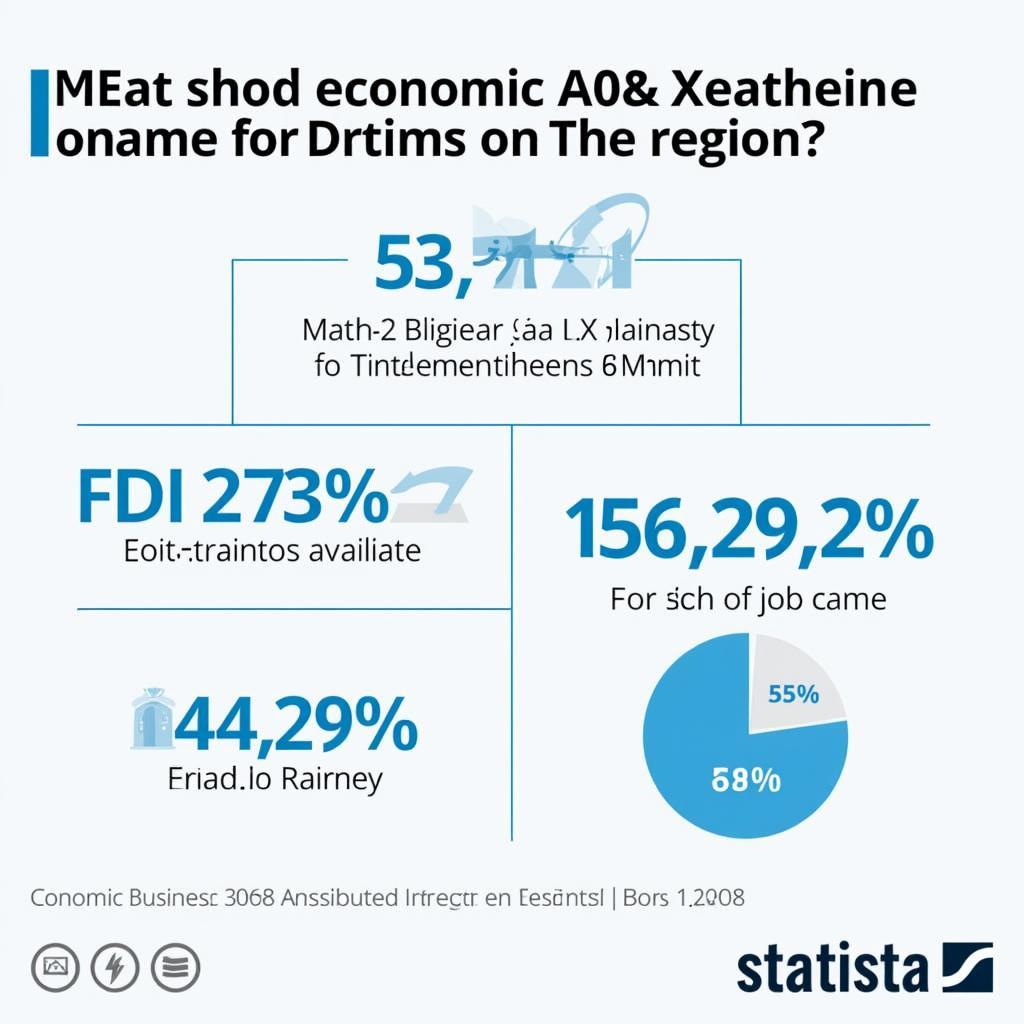ASEAN integration is a dynamic and multifaceted process aimed at creating a more unified and prosperous Southeast Asia. This article delves into the key aspects of this integration, exploring its history, achievements, challenges, and future prospects. We will examine the economic, political, socio-cultural, and security dimensions of this ongoing endeavor.  ASEAN Economic Community Growth Chart
ASEAN Economic Community Growth Chart
The Pillars of ASEAN Integration
The ASEAN Community is built upon three pillars: the ASEAN Political-Security Community (APSC), the ASEAN Economic Community (AEC), and the ASEAN Socio-Cultural Community (ASCC). Each pillar plays a vital role in fostering cooperation and integration among member states. The APSC focuses on promoting peace, security, and stability in the region, while the AEC aims to create a single market and production base. The ASCC, on the other hand, works towards enhancing people-to-people connectivity and fostering a shared ASEAN identity.
The ASEAN Economic Community (AEC)
The AEC is perhaps the most visible and impactful aspect of ASEAN integration. It seeks to create a highly competitive, innovative, and dynamic region characterized by a free flow of goods, services, investment, and skilled labor. The AEC Blueprint 2025 outlines the key strategies and actions to achieve this vision, including trade facilitation, liberalization of services, and harmonization of regulations.
Strengthening Political-Security Cooperation
The APSC aims to enhance political and security cooperation among ASEAN Member States. This involves addressing transnational crime, promoting human rights, and resolving disputes peacefully. The APSC also plays a crucial role in fostering regional dialogue and cooperation on security issues.
Challenges and Opportunities
While ASEAN integration has achieved significant milestones, it also faces numerous challenges. These include narrowing the development gap between member states, addressing non-tariff barriers to trade, and strengthening regional institutions. The diverse political systems and levels of economic development within ASEAN also pose challenges to deeper integration. However, these challenges also present opportunities for growth and innovation. asean 2015 integration article
Overcoming Disparities in Development
One of the key challenges facing ASEAN integration is the significant disparity in economic development among member states. Bridging this gap is crucial for achieving inclusive and sustainable growth across the region.
The Future of ASEAN Integration
ASEAN integration is an ongoing journey. The future success of this endeavor will depend on the ability of member states to work together to overcome the challenges and seize the opportunities that lie ahead. kao kim hourn asean Deeper integration promises to bring greater prosperity, stability, and peace to the region, contributing to a more interconnected and dynamic global community.
What are the potential benefits of further integration?
Further integration holds the potential to unlock significant economic benefits, enhance regional competitiveness, and attract greater foreign investment.
“ASEAN integration is not just about economics; it’s about building a shared future based on common values and aspirations,” says Dr. Anya Sharma, a leading expert on Southeast Asian affairs. “It’s about creating a region where people can live in peace, prosperity, and harmony.”
Conclusion
ASEAN integration is a complex yet vital process. It represents a shared commitment to building a more integrated and prosperous Southeast Asia. asean 2015 article While challenges remain, the potential benefits of deeper integration are immense. ase auc Continued efforts to strengthen cooperation and address the existing obstacles will be crucial for realizing the full potential of the ASEAN Community. apakah moto asean The Article About Asean Integration demonstrates the complex and crucial steps involved in achieving a prosperous and unified Southeast Asia.
FAQ
- What is the main goal of ASEAN integration?
- What are the three pillars of the ASEAN Community?
- What are some of the key challenges facing ASEAN integration?
- How can ASEAN overcome these challenges?
- What are the potential benefits of deeper integration?
- What is the role of the ASEAN Secretariat in the integration process?
- How can citizens contribute to ASEAN integration?
Need Support? Contact us 24/7: Phone: 0369020373, Email: [email protected]. Or visit us: Thon Ngoc Lien, Hiep Hoa, Bac Giang, Vietnam.

